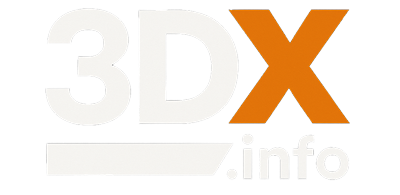The landscape of residential construction is continually evolving, with technological advancements driving new methods and efficiencies. Among these, 3D printing, or additive manufacturing, has emerged as a topic of significant interest, particularly concerning its potential to influence construction costs. This article aims to provide an objective analysis of how 3D printing can affect the cost structure of residential building projects, allowing for an informed perspective on its economic implications.
Understanding traditional construction costs
Before delving into the specifics of 3D printing, it's useful to consider the primary cost drivers in conventional residential construction. Typically, these include:
- Labor: A significant portion of project budgets is allocated to skilled and unskilled labor, from foundation work to finishing touches. Labor costs can fluctuate based on regional availability and unionization.
- Materials: Raw materials such as concrete, lumber, steel, insulation, and roofing materials constitute another major expense. Material costs are subject to market volatility, supply chain dynamics, and transportation.
- Time: Project duration directly impacts overheads, including equipment rental, site management, and financing costs. Delays can lead to substantial budget overruns.
- Waste: Traditional construction often generates considerable material waste, which adds to costs through purchasing excess materials and disposal fees.
- Logistics and Supply Chain: Managing multiple suppliers, deliveries, and on-site coordination can be complex and costly.
How 3D printing influences construction costs

3D printing in construction, often referred to as 'concrete printing' or 'additive construction', introduces a new paradigm that can potentially alter these cost structures. The technology involves large-scale robotic printers that extrude layers of specialized concrete or other materials to build walls and structural elements.
Reduced labor requirements
One of the most frequently cited benefits of 3D printing in construction is its potential to significantly reduce labor costs. A 3D printer can automate the process of laying walls, which traditionally requires a team of masons or carpenters. While some human oversight and finishing work are still necessary, the number of on-site personnel for the structural phase can be substantially lower. This shift could lead to considerable 3D printing construction cost savings, particularly in regions with high labor costs or skilled labor shortages.
Material optimization and waste reduction
Additive manufacturing is inherently precise. The printer extrudes only the necessary material, layer by layer, based on a digital design. This precision can lead to a notable reduction in material waste compared to traditional methods, where cutting, shaping, and discarded off-cuts are common. This efficiency contributes to a more cost-effective additive manufacturing process, as less material needs to be purchased and less waste needs to be disposed of. Furthermore, the ability to print complex geometries means that materials can be strategically placed for optimal structural integrity, potentially reducing overall material volume without compromising strength.
Accelerated project timelines
The speed at which a 3D printer can erect structural walls is often much faster than conventional building methods. While the entire house isn't printed (foundations, roofs, windows, and interior finishes still require traditional methods), the core structural phase can be completed in days rather than weeks. This acceleration can lead to substantial savings in terms of reduced overheads, earlier project completion, and quicker occupancy, all contributing positively to the overall ROI of a 3D printed house.
Design flexibility and structural innovation
3D printing allows for the creation of complex and organic shapes that would be prohibitively expensive or impossible with traditional construction. While not always directly translating to cost savings for a basic rectangular residential building, this capability can enable integrated features (like built-in shelving or unique wall textures) that might otherwise require additional labor and materials. This aspect can contribute to residential building efficiency by optimizing space and functionality within the printed structure.
Evaluating the return on investment (ROI)
Calculating the ROI for a 3D printed house involves weighing the initial investment against the long-term savings. The upfront cost of acquiring and setting up 3D printing equipment can be substantial for a construction company, and specialized training for operators is necessary. However, for companies planning to construct multiple units or engage in large-scale housing projects, these initial costs can be amortized over several projects, making the technology increasingly viable.
Factors influencing the actual ROI include:
- Scale of operations: The more projects a 3D printer is used for, the lower the per-unit cost of the technology becomes.
- Local labor and material costs: In areas where traditional labor and material costs are exceptionally high, the savings from 3D printing become more pronounced.
- Regulatory environment: Building codes and permitting processes for 3D printed structures are still evolving in many regions, which can impact project timelines and costs.
- Post-printing finishes: The cost of installing roofs, windows, doors, plumbing, electrical systems, and interior finishes remains largely similar to traditional construction, as these elements are not typically 3D printed.
Conclusion

3D printing in residential construction presents a compelling case for potential cost savings and increased efficiency. By reducing labor requirements, optimizing material use, and accelerating construction timelines, it offers a pathway to more cost-effective additive manufacturing. While an initial investment in the technology is required, the long-term benefits, particularly for scalable projects, suggest a positive ROI for a 3D printed house. Ultimately, a thorough, project-specific analysis considering all variables is essential for any developer or homeowner looking to understand the full economic impact of embracing this innovative construction method.


